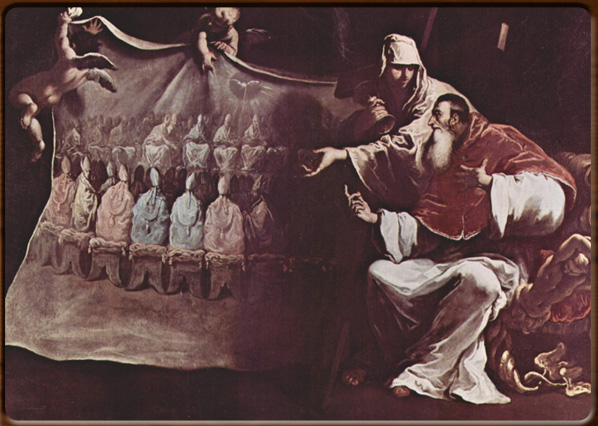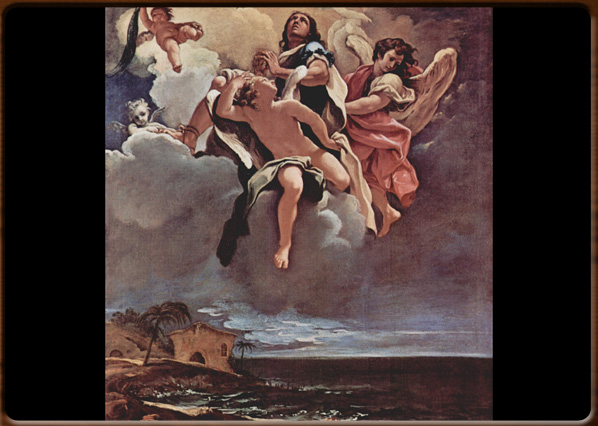
Pope Paolo III has the vision of the Council of Trent. Sebastiano Ricci, 1687-88, Museo Civico, Piacenza.

The deification of a blesses. Sebastiano Ricci, fresco, 1693-94, San Bernardino alle Ossa, Milan.


No video
Sebastiano Ricci (Belluno, 1659 – Venice, 1734) was a Venetian painter from the 17th and 18th Centuries.
He moved to Bologna and then Parma when he was 20 and there painted his Madonna del Serraglio (1685) for Duca Ranuccio. He then went to Rome, where he studied Baroque decoration. At the end of the 1600s he returned to the Veneto region.
Having been influenced by the likes of Correggio, Carracci and Paolo Veronese, Ricci’s style was quite different to that of the local artists. His use of bright colours and Baroque decorativismo merged with Venetian chromatic tradition.
During this period he started working with his nephew Marco (Belluno, 1676 – Venice, 1729), who followed him to England to work on a "Resurrection" for the Chelsea Hospital and various mythological paintings in Burlington House, London, now the Royal Academy.
An artist of international fame, in 1724 Ricci was summoned to Turin by the Savoia royal family to paint a few works in the Palazzo Reale and two altarpieces for the Basilica di Superga. Ricci also painted the ceiling in Palazzo Colonna in Rome, the dome of San Bernardino alle Ossa (1695) in Milan, the frescoes in Palazzo Marucelli (1706-07) in Florence, the altarpieces (1733) for the Church of San Rocco and the Enthroned Madonna with Saints (1708) in San Giorgio Maggiore, both in Venice.
1600 - 1700 - - rev. 0.1.5